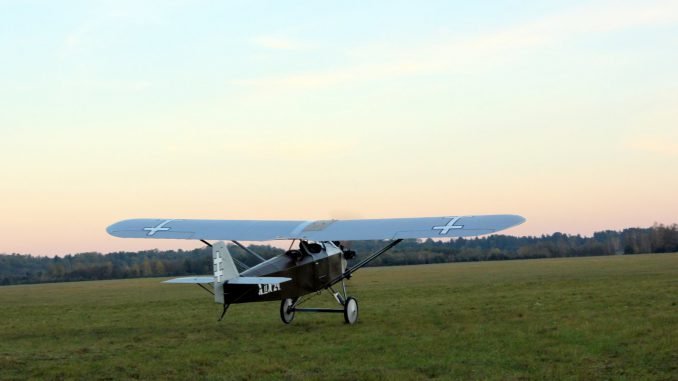
In celebration of the 100th anniversary of the restoration of the state of Lithuania, we invite you to review a few significant historical events and some of the most interesting innovations in the country.
“Great impulses for Lithuanian inventors to develop their ideas was the restoration of Lithuania’s independence in 1918, the establishment of a national university in Kaunas, the creation of the legal basis for inventions, the emergence of other science, medical institutions, and the first factories in interwar Lithuania,” says Kęstutis Šetkus, Director of Science, Innovation and Director of Technology Agency (MITA).
According to him, in the period of Independence, the foundations for the emergence of innovations in Lithuania and the purposeful development of various fields were provided: from agriculture to scientific and technical achievements.
The first trademark
The first registered trademark in Lithuania occurred 1922. The registered trademark of “Ekstransas” is registered in Kaunas Export Transport Company. It was intended for the packaging of various agricultural products and labelling of other goods.
By 1923 The first temporary protection certificates were issued to the Lithuanian applicants – Kaunas engineer J. Kopelovich-Jozefen for the invention “The Lithuanian system of brick unification”, as well as the Kelmė innovator Balys Vaicichauskas for the invention “How to save people from the water/drowning”.
First derived breeds
Very important work in Lithuania began in 1922. A Dotnuva Selection Station was set up to undertake a plant-breeding program. The first experimental fields of winter wheat, rye, barley, oats, flax, potatoes and red clover were caught. Two years later, in 1924, the first Lithuanian winter wheat variety “Akuotieji” was created.
First practical innovation
1925 The first practical innovation was created in Lithuania, which was rapidly applied not only in Lithuania, but also in the whole world. It was an electric loop that was designed by a student at the University of Technology, based in Kaunas, based in Kaunas, student Alfonso Mažonis that could create a sound at several places at a pre-set time.
The invention was soon adapted by the university itself, and rang at the beginning and end of the lecture. Before that time, the watchman had rang the bell.
The second invention of this young Lithuanian innovator was a rotary moving machine that could be adapted for simple cinema. This invention could be used to project cinematic films in places where there was no electricity.
The first patent
1928 The first five national patents were issued to companies in England, Denmark and Germany. The first Lithuanian patent was issued for the invention “Improvement in photographic apparatus” and belonged to the English company Photomaton Parent Corporation Ltd.
The first patent for a Lithuanian innovator – Kaunas engineer A. Veintraubas, who patented the invention of the “Wicker Hope” X-letter device, would hold the inner filling of a bed inside, not allowing it to fall to the floor. “
There were also quite simple inventions for home improvement, such as “Improved Rabies treatment” (patent number 323); “Herb-cleaning machine” (patent number 529); “Head rest for the bath” (patent number 565); “Writing Pen Holders” (patent No. 650); “Method for the Preparation of Calcium Lacquer” (Patent No. 794); “Rubber glove with 2 lines of upper bristles for teeth cleaning and dental massage” (patent number 1021).
Subsequently, on the basis of the materials remaining in the Central Archives of Lithuania, in 1940, March 2 the 1000th Lithuanian patent was published, which belonged to Karol Jakobson from Kaunas, who invented a method for the production of soap powders. During the entire period of the interwar Lithuanian patent protection (1928 – 1940), more than 1000 patents were issued, of which 130 were Lithuanian inventors.
A rich inventory of aviation invention
Lithuanians were fascinated by innovation and aviation achievements, and already by 1919, The Military Aviation School was founded, and later the first attempts to construct planes began. Not surprisingly, already by 1922, Jurgis Dobkevičius created the first Lithuanian sporting aircraft – the wooden monoplane DOBI-1.
Not long afterwards – in 1925 the first Lithuanian monoplane, which brought Lithuania fame, ANBO I, was created.
It was a single-seat training airplane designed by Antanas Gustaitis, whose fuselage was made of a welded steel pipe and covered with cloth. The wings were wooden structures, also covered in cloth.
1932 The first Lithuanian glider “Technician-1”, made by the innovator Bronius Oškinis, was made with his assistants.
1938 September 5 the first Lithuanian airline “Lietuvos oro linijos” was opened. It is important to note that Lithuanian avionic inventions and innovations in global inventions followed- just a few years later.
The first radio sets
After the restoration of Lithuania’s independence, the first technology to rapidly enter Lithuania was radio. The first radio tuner was already marketed in the annual Kaziukas fair.
1926 A Lithuanian radio station started operating in Kaunas and the first radio broadcast in Lithuania was broadcast. Many amateurs started to build radio receivers themselves.
In Lithuania, the first radio receivers in small quantities began to be produced the S. Brašiškis laboratory in Šiauliai, Šiaulių company Dubysa, Student Technicians’ Association in Kaunas, Radiotechnika AB in Kaunas.
And here in 1935 the first Lithuanian Radio Factory Karadi was established in Kaunas. The first machines manufactured by these factories have survived to this very day. All of the radios were registered and owners had to pay a subscription fee.
